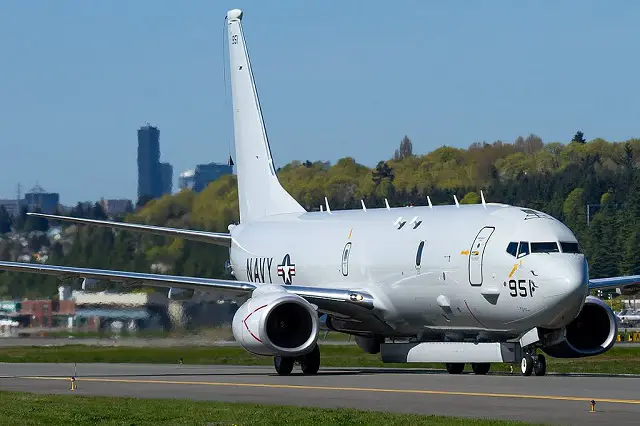Breaking news
U.S. Navy, Raytheon and Boeing started flight testing Advanced Airborne Sensor on P-8A Poseidon.
| 2014
| |
|||
| a | |||
Naval
Defense News - USA |
|||
U.S.
Navy, Raytheon and Boeing started flight testing Advanced Airborne Sensor
on P-8A Poseidon |
|||
A
U.S. Navy P-8A Poseidon maritime patrol aircraft was recently spotted
at the Boeing headquarter's in Seattle conducting tests (including flight
tests) with Raytheon's Advanced Airborne Sensor (AAS) fitted under the
aircraft. Based on the existing AN/APS-149 Littoral Surveillance Radar
System (LSRS), the AAS is designed to detect moving targets both on
the surface of water and on land. |
|||
 A
U.S. Navy P-8A Poseidon maritime patrol aircraft was recently spotted
at the Boeing headquarter's in Seattle conducting tests (including flight
tests) with Raytheon's Advanced Airborne Sensor (AAS) fitted under the
aircraft. Picture from bmpd.livejournal.com A
U.S. Navy P-8A Poseidon maritime patrol aircraft was recently spotted
at the Boeing headquarter's in Seattle conducting tests (including flight
tests) with Raytheon's Advanced Airborne Sensor (AAS) fitted under the
aircraft. Picture from bmpd.livejournal.com |
|||
LSRS
is currently operational on U.S. Navy P-3C Orions. According to Raytheon,
the AAS will provide airborne radar surveillance with next-generation
line-of-site capability. According to several sources, the AAS/Poseidon combo would provide the U.S. Navy with a capability similar to the US Air Force's dedicated E-8 Joint STARS platform. It is an airborne battle management, command and control, intelligence, surveillance and reconnaissance platform. Its primary mission is to provide theater ground and air commanders with ground surveillance to support attack operations and targeting that contributes to the delay, disruption and destruction of enemy forces. Link to P-8A Poseidon Maritime Patrol Aircraft technical datasheet |


























